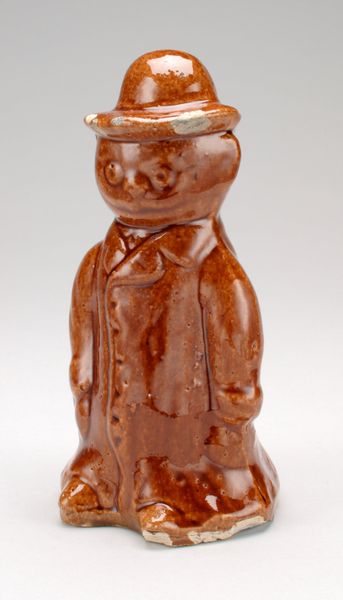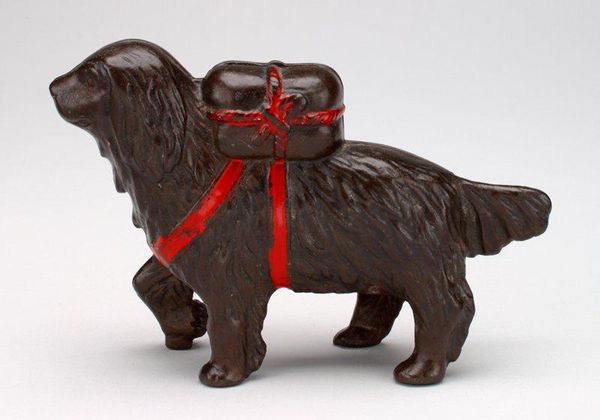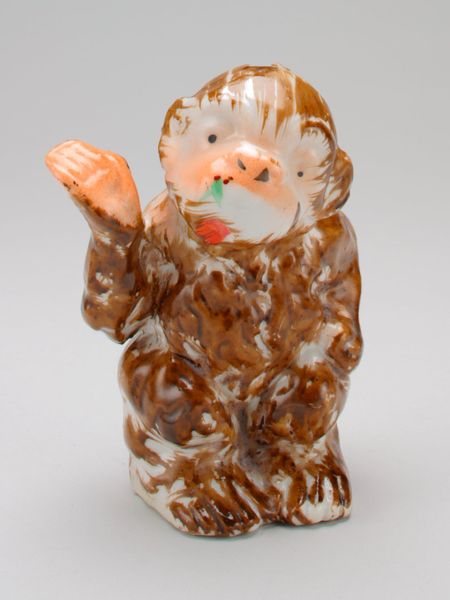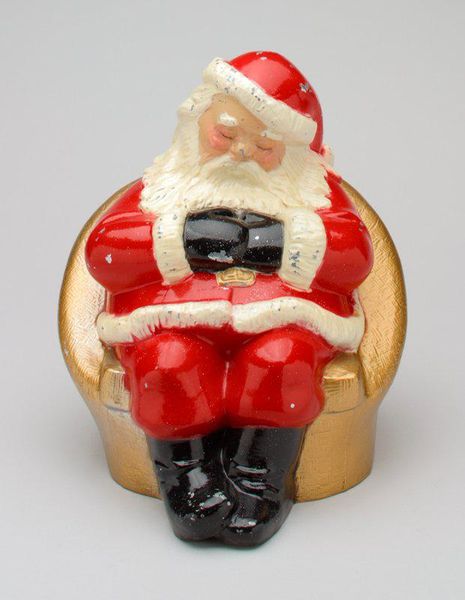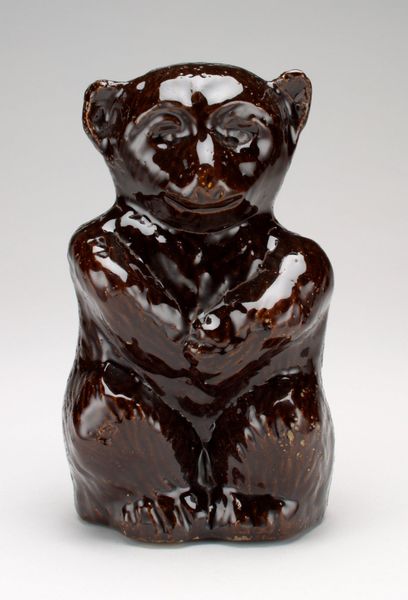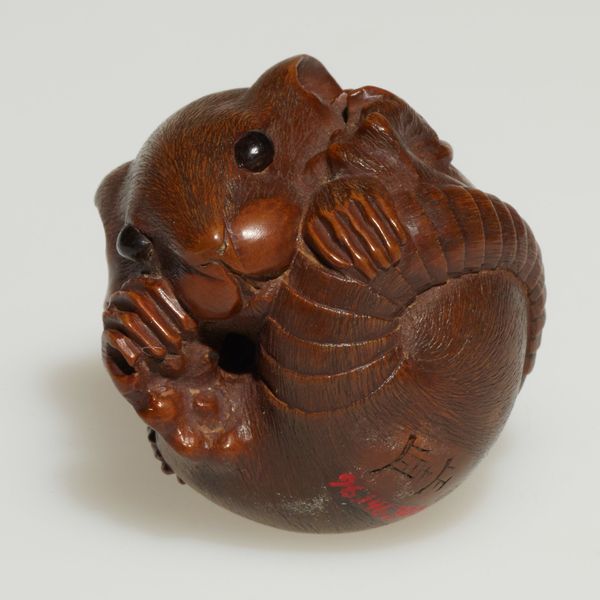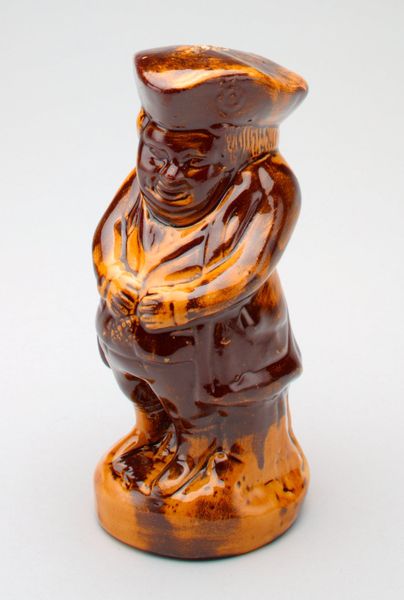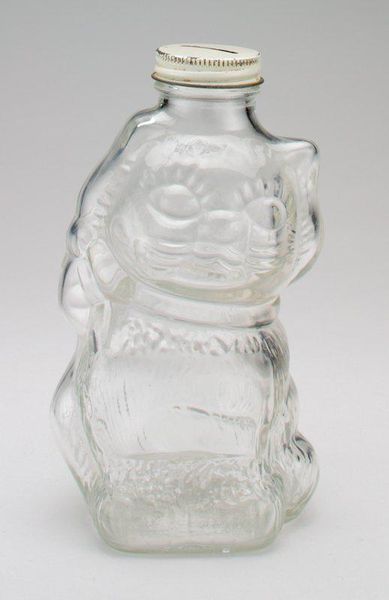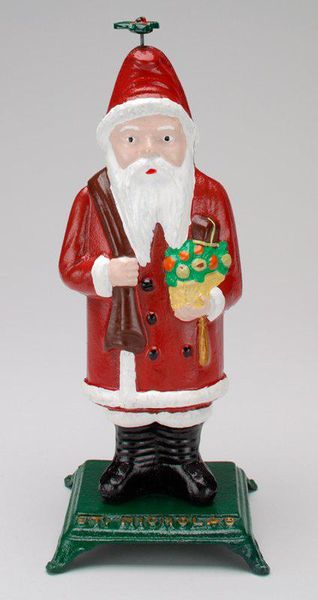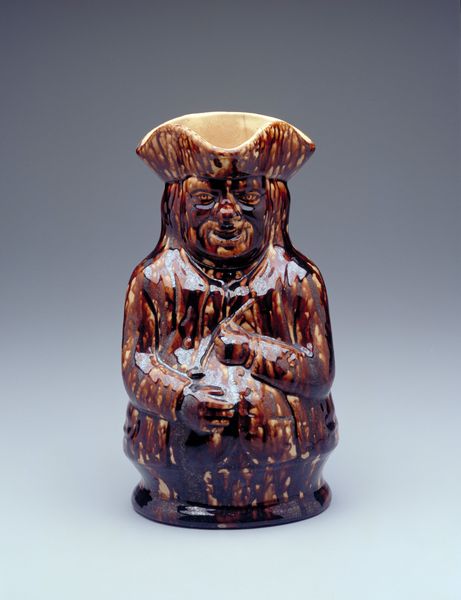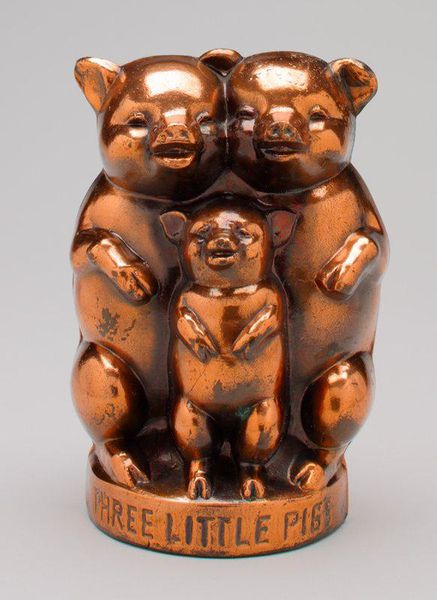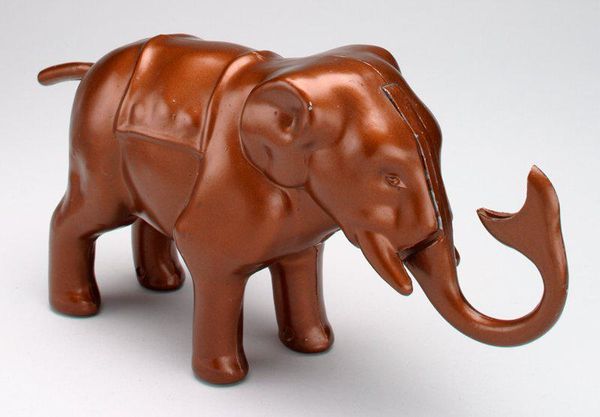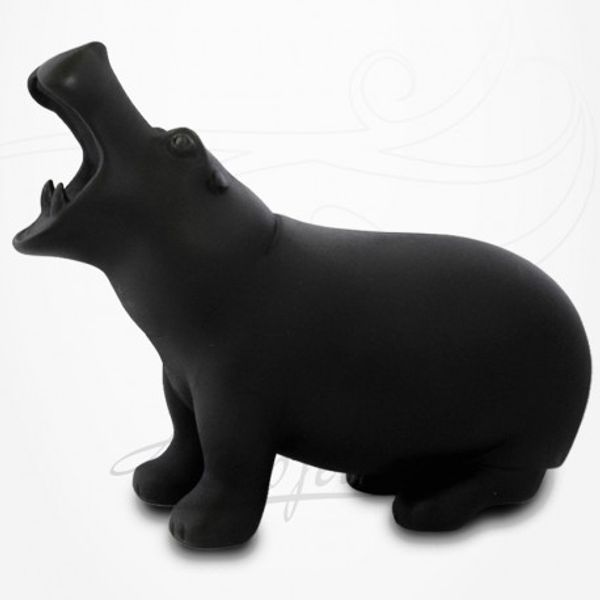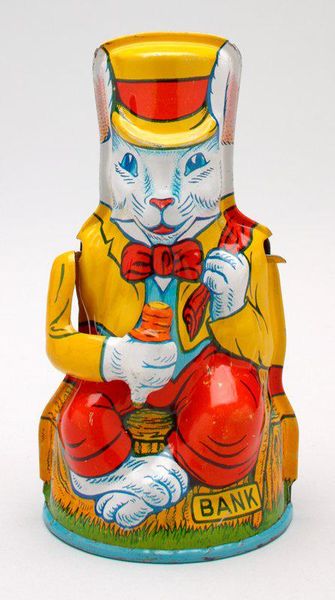
ceramic, sculpture
#
ceramic
#
figuration
#
folk-art
#
sculpture
#
decorative-art
Dimensions: 3 7/8 x 3 x 3 1/4 in. (9.84 x 7.62 x 8.26 cm)
Copyright: No Known Copyright
Curator: So here we have an interesting example of decorative art, a ceramic still bank in the form of a teddy bear, thought to be from around the 20th century. It’s currently held in the collection of the Minneapolis Institute of Art and, despite its simplicity, there is something immediately striking about it. Editor: It feels simultaneously nostalgic and a little unsettling, actually. It's cute, but there’s also a certain coldness to the ceramic and those vacant eyes that suggests more than mere innocence. The surface detail tries to replicate a woven texture; it's as though they wanted to manufacture an object from nature using artifice. What's your read on that? Curator: That’s perceptive. What interests me is the choice of material—ceramic—for a toy. How does the transition from a soft, plush object, traditionally made with textiles by female labor, into this durable, manufactured one impact its meaning? Mass production versus hand-making immediately come to mind. Think about the materials sourced, the methods used, the accessibility this offers to consumers of folk art... Editor: Exactly. The history of the teddy bear is deeply entwined with narratives of childhood innocence and capitalist consumerism, after all. To put that innocence in what's essentially a ceramic cage that children feed money into raises all kinds of questions about cultural transmission. Who made these bears? Where were they sold? Did certain demographics profit from child labor or, maybe more directly, from the idea of a ‘charming’ and docile childhood? What was the social climate? And why replicate an object made for comfort through this…industrial and less comforting materiality? Curator: Right. And looking closer, the glaze appears uneven in places, betraying the mass production aspect. It suggests an industry striving for replication and broad distribution, the kind that really transformed how people accessed material goods in the 20th century, when the home no longer meant producing most material goods and wares ourselves. Editor: So, on the surface, a charming collectible; but when we begin asking how it got made and where it sits in cultural history, we get something far more thought-provoking, even unsettling. A ceramic guardian and witness, embodying consumer values and what may or may not remain as treasured ‘toys’ across changing social dynamics. Curator: Absolutely, that perspective encourages a more inquisitive dialogue with the teddy bear beyond sentimental value. Editor: Agreed; seeing its social narrative encourages that connection more directly!
Comments
No comments
Be the first to comment and join the conversation on the ultimate creative platform.
